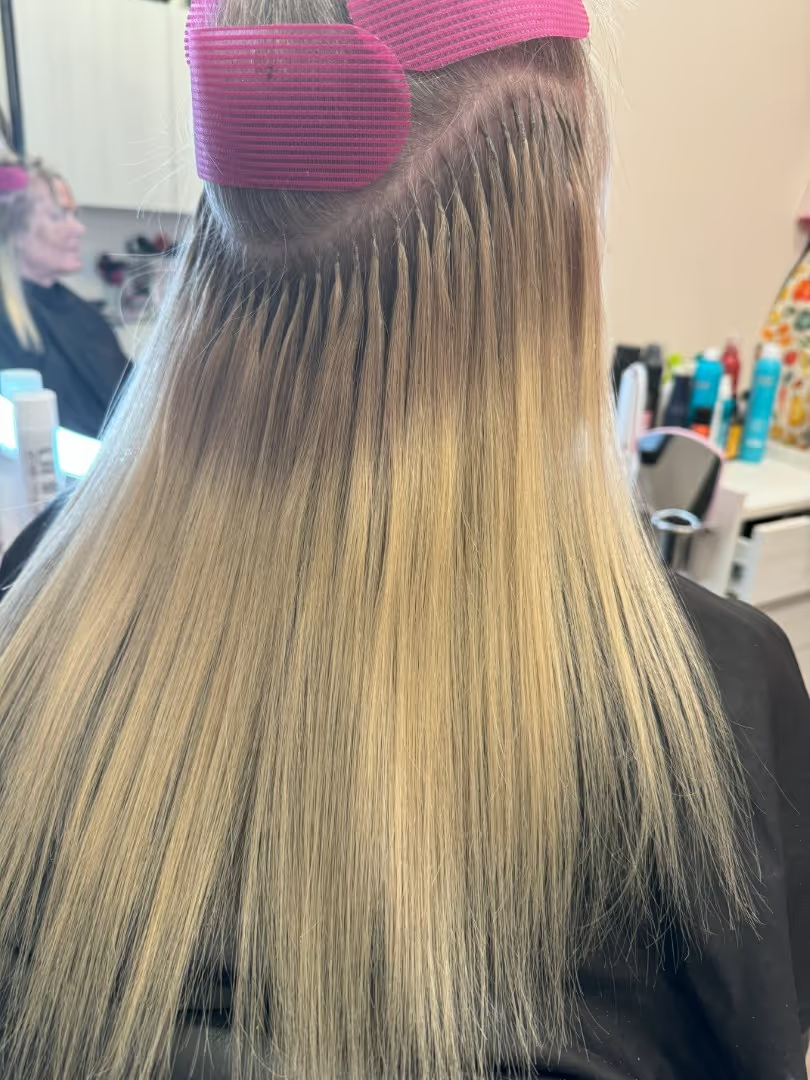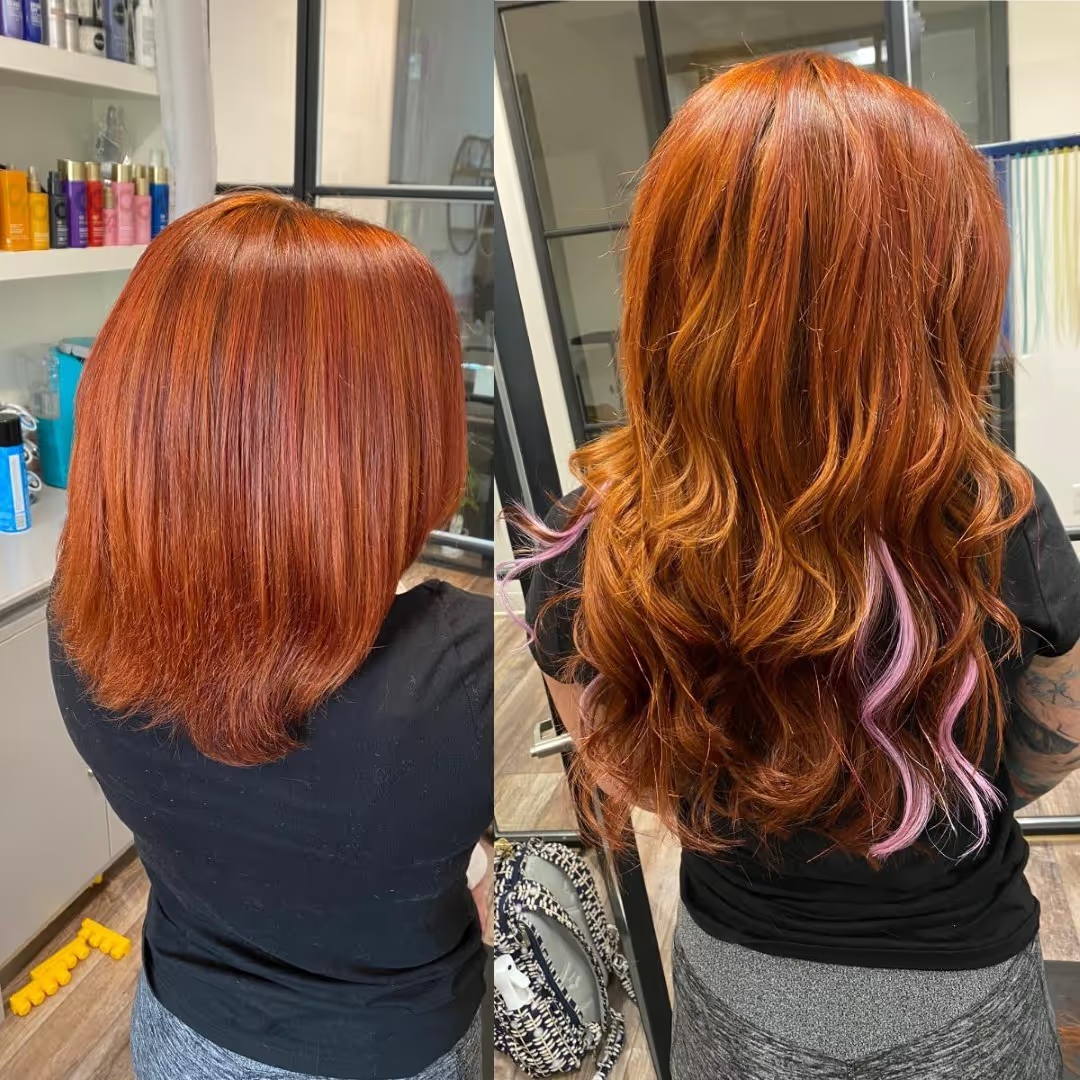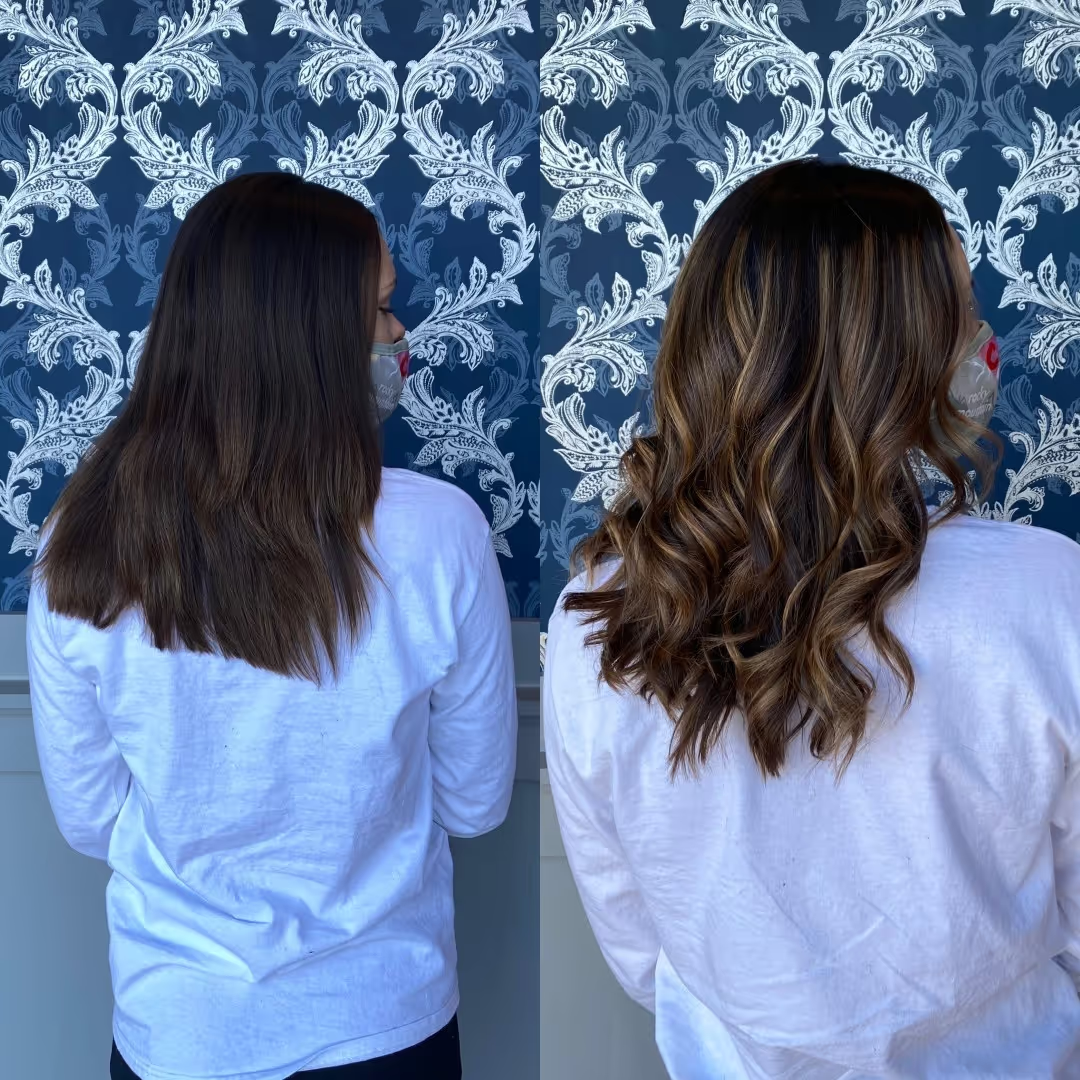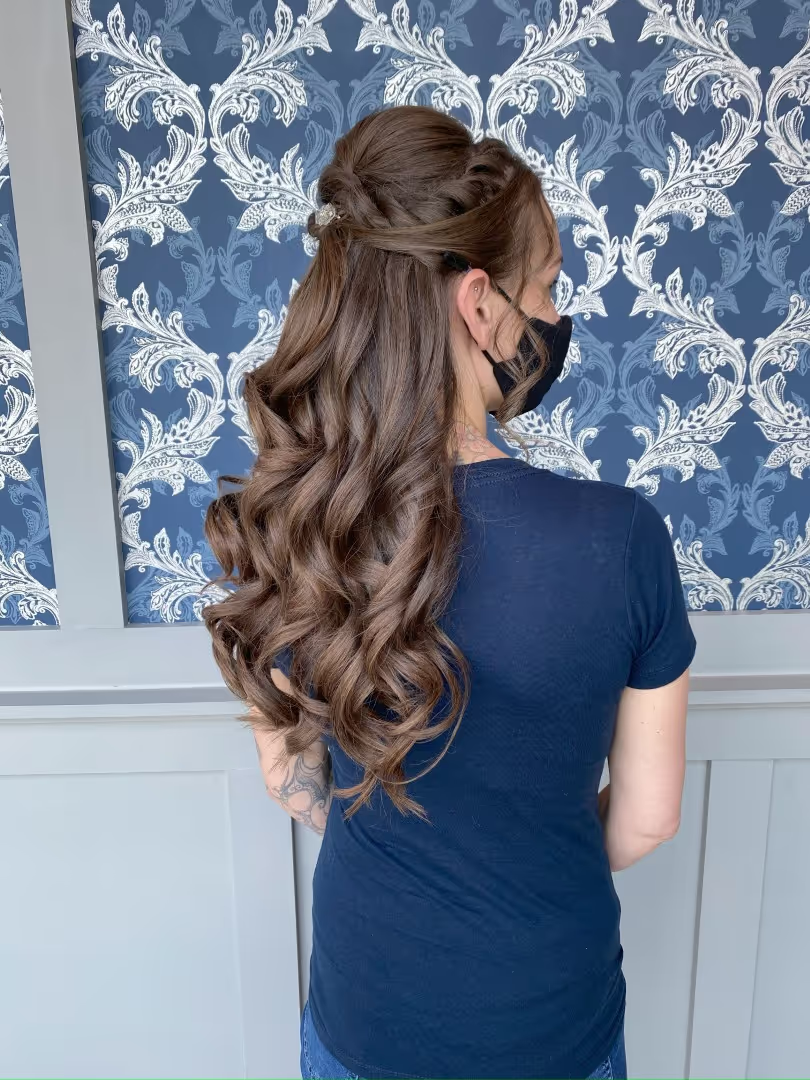Key Takeaways
Why Colorado's Altitude Wreaks Havoc on Hair Extensions
Living at 5,280 feet means your extensions face challenges that people at sea level never experience. Colorado's thin atmosphere holds way less moisture than humid climates - we're talking just 31% humidity in summer compared to the ideal 40-60% range for healthy hair.
The reduced atmospheric pressure creates this perfect storm where moisture gets sucked right out of your extensions. Unlike your natural hair that gets oils from your scalp, extensions are basically on their own out here. They're fighting a losing battle against our super dry air every single day.

UV radiation hits us about 50% harder than coastal areas because there's less atmosphere to filter those rays. Your extensions are getting blasted with sun damage while simultaneously losing moisture to our bone-dry air. It's honestly amazing anyone keeps their extensions looking good here without knowing the tricks.
Temperature swings don't help either - we can see 25-35°F differences between day and night. Hair cuticles are constantly expanding and contracting, which makes them lift and become more porous. More porous hair loses moisture even faster.
The Unique Challenges Extensions Face in Dry Climates
Static electricity becomes your worst enemy when humidity drops below 35%. I see clients come in looking like they stuck their finger in an electrical socket, especially with clip-in extensions because those metal clips conduct static like crazy.
Your extensions start feeling brittle within weeks if you don't stay on top of moisture. That normal 12-18% water content hair needs? Gone. The keratin protein gets rigid and snaps, particularly at attachment points where there's already stress from daily movement.

Hard water throughout Colorado adds another layer of difficulty. Calcium and magnesium build up on hair shafts, making extensions feel rough and look dull. This buildup actually blocks moisturizing products from penetrating the hair shaft - so you could be using the best products but getting zero results.
The worst part? UV damage happens fast at our elevation. Blonde and chemically processed extensions get hit hardest, but even natural colors fade and the protein structure breaks down quicker than you'd expect.
Essential Products and Ingredients for Colorado Extension Care
Hyaluronic acid is honestly a game-changer for Colorado extension care. This stuff can hold 1,000 times its weight in water and creates a protective moisture barrier that actually works in low humidity. Products like Kérastase Blond Absolu contain therapeutic levels that make a real difference.
Ceramides repair damaged cuticles and seal in moisture - exactly what extensions need when they're getting beat up by our dry air. The CeraVe hair line and Kérastase Fondant Extentioniste literally rebuild your hair's protective barrier from inside out.

Natural oils become non-negotiable in Colorado:
- Argan oil provides lightweight moisture with heat protection
- Jojoba oil mimics natural sebum so well it actually regulates oil production
- Coconut oil works great for weekly deep treatments (just rinse thoroughly)
Professional leave-in treatments aren't optional here. Davines Oi Milk consistently ranks top among extension specialists for sustained moisture without weight. For budget options, CeraVe Gentle Hydrating Conditioner offers ceramides and niacinamide at drugstore prices.
Heat protectants become doubly important when you're dealing with environmental heat stress plus styling tools. Oribe Mistify Restyling Spray protects up to 450°F while adding moisture - crucial dual function for our climate.
Daily and Weekly Maintenance Routines for Colorado Residents
Your morning routine needs to prioritize moisture retention and environmental protection. Start by brushing with a boar bristle brush from ends up, holding the attachment point to prevent pulling. Apply lightweight oil from mid-shaft to ends, focusing extra attention on dry areas.
Before any heat styling, always use quality heat protectant and keep tools at 350°F maximum. Colorado's dry air makes extensions way more susceptible to thermal damage than normal.

Evening routines focus on overnight protection. Thoroughly detangle before bed to prevent matting, then secure in loose braid or low ponytail with silk scrunchie. Apply additional oil to dry areas and always use silk or satin pillowcases to reduce friction.
Weekly deep care becomes crucial - wash only 2-3 times maximum to prevent over-stripping essential oils. Pre-wash detangling is mandatory, then use sulfate-free shampoo in gentle scissor motions between wefts. Conditioner goes mid-shaft to ends only, leave on at least 5 minutes before lukewarm rinse.
Deep conditioning treatments should happen 1-2 times weekly. Moroccan oil Intense Hydrating Mask provides 10-minute intensive repair, while Garnier Fructis 1 Minute Hair Mask offers budget-friendly fast moisture.
Professional Maintenance Services Your Salon Should Offer
Professional maintenance becomes especially critical for Colorado residents because environmental stressors accelerate wear. Regular appointments every 4-8 weeks prevent minor issues from becoming complete replacement situations.
Move-up appointments are the most common service - repositioning extensions as natural hair grows. Tape-in extensions need attention every 4-6 weeks for re-taping, while sew-in methods can extend to 6-8 weeks. Fusion and K-tip extensions typically maintain position for 10-12 weeks but need expert bond assessment.

Professional deep conditioning uses salon-grade products unavailable to consumers. These treatments restore moisture levels and protein balance that home care alone cannot achieve - extending extension lifespan significantly in our harsh climate.
Bond inspection and maintenance services examine attachment points for wear, slippage, or damage that could lead to extension loss. Trained stylists can spot problems early and make adjustments preserving both extensions and natural hair health.
Additional services include clarifying treatments for product buildup, color matching for seamless blending, and specialized cuts maintaining integration between extensions and natural hair. UV protection applications become particularly important in Colorado.
Common Mistakes That Damage Extensions in Dry Climates
Over-washing tops the list of Colorado extension mistakes. Many people wash daily trying to combat oil buildup at roots - counterproductive approach that strips essential moisture faster than it can be replaced.
Using regular sulfate shampoos proves particularly damaging in dry climates. These harsh detergents remove protective oils faster than they can be replaced. Combination of sulfates and low humidity creates perfect storm for cuticle damage.

Excessive heat styling compounds Colorado's natural heat stress on extensions. Environmental heat from sun and altitude already stresses hair structure - adding thermal tools above 350°F or styling without heat protection causes irreversible damage within weeks.
Sleeping with wet hair becomes especially problematic in Colorado's dry air. Extensions are most vulnerable when saturated and low humidity causes uneven drying leading to matting and breakage. Speed-drying with high heat makes this mistake even more damaging.
Neglecting scalp care creates cascade of problems. Dry air causes scalps to overproduce oil in some areas while becoming flaky in others, leading people to use harsh clarifying products that strip extensions of necessary moisture.
Product selection errors include using glycerin-based products without understanding their reverse effect in low humidity, applying oil-based treatments to tape bonds causing slippage, and choosing strengthening products that make extensions brittle rather than flexible.
How Different Extension Types Handle Colorado's Climate
Human hair extensions perform best in Colorado's challenging environment due to their ability to absorb and benefit from moisturizing treatments. These extensions can be treated similarly to natural hair, accepting deep conditioning, oil treatments, and protective styling.
Virgin human hair offers highest resilience, maintaining cuticle structure and responding well to Colorado-specific care routines. Processed human hair requires extra attention but can still achieve excellent results with proper hydration and protection.

Synthetic extensions present unique challenges in Colorado's climate. While they resist humidity-related frizzing and maintain style, they cannot absorb moisturizing treatments and are particularly susceptible to static electricity buildup. Heat sensitivity becomes problematic when environmental temperatures are high.
Attachment method significantly impacts how extensions handle dry conditions. Clip-in extensions offer advantages because they can be removed for intensive treatments and aren't subjected to constant environmental stress. This removability allows deep conditioning treatments impossible with permanent methods.
Tape-in extensions require special care in dry climates because harsh products or excessive oils can weaken adhesive, leading to slippage. Balance between providing enough moisture and maintaining bond integrity requires expertise and high-quality products.
Sew-in and hand-tied weft methods distribute stress better across multiple attachment points, reducing breakage risk from Colorado's environmental stressors. However, these methods require professional maintenance ensuring proper tension and preventing natural hair damage.
Seasonal Considerations for Colorado Extension Care
Colorado's dramatic seasonal transitions require strategic adjustments addressing changing environmental conditions and their effects on hair health.
Winter months bring harshest conditions, combining outdoor cold with indoor heating systems reducing humidity below outdoor levels. Furnaces and fireplaces can drop indoor humidity to desert-like 10-15%, creating extreme moisture loss conditions.

Double your deep conditioning frequency during winter and consider bedroom humidifier maintaining 40-50% humidity overnight. Static electricity peaks during winter, requiring anti-static products and techniques. Silk scarves under winter hats protect extensions from friction and static buildup.
Summer brings intense UV exposure and heat stress compounding Colorado's altitude effects. Mineral-based sunscreens safe for extensions become essential - chemical sunscreens containing avobenzone or octocrylene can discolor blonde extensions.
Swimming requires pre-protection with leave-in conditioner preventing chlorine damage and mineral absorption from Colorado's hard water. Spring and fall transitions require flexibility as humidity levels fluctuate and temperatures swing dramatically.
These seasons offer optimal times for professional maintenance appointments and deep conditioning treatments preparing extensions for harsh conditions ahead. Altitude sickness can affect extension care routines for Colorado newcomers, as reduced oxygen levels may impact hair growth cycles and scalp health.
Frequently Asked Questions
How often should I wash my extensions in Colorado's dry climate?
Limit washing to 2-3 times per week maximum in Colorado. Our low humidity means extensions lose moisture quickly, so frequent washing strips essential oils faster than they can be replaced. Focus shampoo on scalp only and always use sulfate-free formulas.
What's the best way to prevent static electricity in my extensions during Colorado winters?
Use silk or satin pillowcases, apply leave-in treatments with anti-static properties, and consider an ionic hair dryer. Avoid synthetic materials and keep indoor humidity between 40-50% with a humidifier if possible.
Can I swim with extensions in Colorado's chlorinated pools?
Yes, but pre-treat with leave-in conditioner to create a barrier against chlorine absorption. Colorado's hard water compounds chemical damage, so rinse immediately after swimming and follow with deep conditioning treatment.
How does Colorado's altitude specifically affect my extensions differently than sea level?
At 5,280 feet, atmospheric pressure is reduced and air holds less moisture. UV radiation is 25-50% higher, causing faster protein breakdown and color fading. Extensions experience accelerated moisture loss and increased brittleness.
Should I use different products for my extensions in summer versus winter in Colorado?
Yes - winter requires heavier moisture treatments and static-fighting products, while summer needs UV protection and lighter oils that won't weigh hair down. Adjust deep conditioning frequency from weekly in summer to twice weekly in winter.
Why do my tape-in extensions seem to slip more in Colorado?
Colorado's dry air can affect adhesive bonds, and many people overcompensate with too much oil near the tape, causing slippage. Use minimal product near bonds and ensure your stylist uses Colorado-appropriate adhesives designed for low humidity conditions.
Ready for your perfect hair extension care routine?
Remember, everyone's extension journey is unique in Colorado's challenging climate! What works for someone in Florida definitely needs tweaking for our high-altitude, low-humidity environment.
Want personalized extension care advice that actually works at 5,280 feet? Stop by Jo Hearts Hair in Lone Tree, and let's create your perfect Colorado-specific care routine together!
Located at: 9227 East Lincoln Ave, Suite #111, Lone Tree, CO 80124
Follow @joheartshair for daily inspiration and behind-the-scenes peeks at stunning transformations that thrive in Colorado's climate! ✨
Stay hydrated (your hair too!),
XOXO,
Jo 💕




